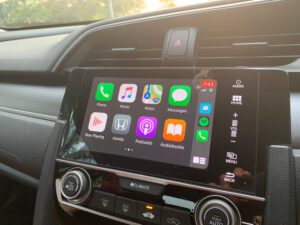It was just 134 years ago in Mannheim that Karl Benz built the first automobile. Designs and manufacturing slowly morphed over the following century or so. Then, within the past two decades or so, tech advances are being developed at light speed.
Today’s normal internal combustion engines have much tighter tolerances and are extremely efficient compared with early designs. Electronics and convenience features are beyond the scope of what early designers ever visualized. And the technology continues to expand at mind-numbing rates.
Where is tech taking the automotive industry in the future? Here are six tech initiatives that will have a bearing on the future of automotive retail.
Autonomous Vehicles
There’s no doubt that autonomous vehicles will be integral in the automotive economy in the near future. Developments from Tesla, Audi, Volkswagen, Volvo, Toyota, Lyft, and dozens of other innovators have driven the question of AV into certainty. To what extent remains to be seen, however, self-driving vehicles are being tested in several states by a range of companies.
AV technology will change the landscape, giving motorists the option to be active participants or passengers in their own car. What that occupant can do with that free time could change the definition of commuting.
Shared Mobility
Similarly, shared mobility has carved a place into the auto industry and traditional car ownership. Though the concept of services like Uber and Lyft can entice environmentally-conscientious citizens to abandon owning their own vehicle, it’s currently supplemental for most users, much like a taxi service.
Since shared mobility includes bike-sharing and peer-to-peer ridesharing also, it remains attractive for urban settings. An industry worth nearly $105 billion in 2017, it’s expected to grow 25% annually until 2025.
Machine Learning
Also commonly known as artificial intelligence, machine learning is deeply seated in many new tech features in cars today. Driver assistive features like emergency braking and adaptive cruise control, and data-driven systems like predictive maintenance and risk assessment for auto insurance premiums and claims are part of the package. Driver monitoring like analyzing facial features for fatigue are also driven by machine learning.
These technologies are becoming commonplace in today’s cars and will be even more interlaced with coming models.
Enhanced Connectivity
You might be thinking Apple CarPlay and Android Auto or Bluetooth phone capability as a vehicle’s connectivity. There’s so much more to it. Automatic 911 response after a collision or Teen Driver monitoring, for example, are ways that cars currently keep you connected with your car. And that’s just the start.
Future vehicles will have V2V connectivity, or vehicle-to-vehicle, that lets them talk to each other. AI is based heavily on connectivity, as are in-vehicle updates for infotainment systems and self-driving features. Drastic changes in reliability and speed are coming with 5G networks, making connectivity even more accessible for automotive applications.
Expanded Electrification
It’s been said for years already that electrification will become mainstream. It’s still on its way, and the next year or two will be a pivotal time for electric and hybrid cars. Over the next decade, the Volkswagen group of companies plans to produce more than 22 million electric cars. Toyota plans to sell more than 5 million electrified vehicles, some hybrid and some fully electric.
Battery development has been the facet slowest to become viable, although solid state batteries are planned by multiple suppliers to ‘fuel’ the onslaught of electric cars coming down the pipe.
Digital Marketing
How car ads are presented to potential purchasers is infinitely different than even a couple years ago. Print ads and television commercials are much less prominent while digital campaigns drive droves of traffic. That can be targeted social media campaigns or email blasts to current owners, or individualized marketing powered by AI.
AI-based marketing targets a user’s needs based on their immediate circumstances. Someone who’s low on fuel could be shown ads for local gas stations, for example. A car owner whose odometer rolls over 60k miles could be shown ads for the newest model and its features.








